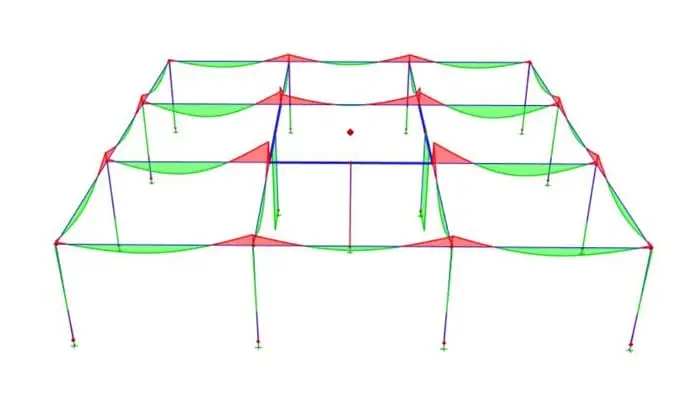
Differential Axial Deformation Effect (DADE) in 3D Analysis of Buildings
Summary
Understanding the Differential Axial Deformation Effect
This design guide delves into the Differential Axial Deformation Effect (DADE) of columns and walls, an essential consideration in the 3D analysis of multi-storey buildings. DADE refers to the varying axial deformations in structural elements due to differences in stiffness, load distribution, and geometric properties. These variations can lead to unexpected force diagrams, particularly bending moments in top-storey beams.
Causes and Impact of DADE
DADE typically arises in multi-storey buildings where structural elements, such as columns and walls, exhibit stiffness variations. These differences cause unequal load sharing, leading to differential axial deformations. This phenomenon can significantly impact the overall performance of the structure, creating:
- Unexpected force distributions in beams.
- Additional bending moments, especially in the top-storey beams.
- Challenges in achieving optimal load paths and ensuring structural safety.
Methods to Mitigate DADE to Differential Axial Deformation Effect
The guide explores practical techniques for reducing DADE, including:
- Stiffness Adjustment Using the Area Factor: Adjusting the stiffness of structural elements ensures more balanced load distribution and reduces differential deformations.
- Finite Element (FE) Floor Analysis: Advanced FE analysis provides precise results by accounting for stiffness variations and material properties.
Both methods can help engineers mitigate the effects of DADE, ensuring structural stability and better alignment with design intentions.
Who Should Read This Guide?
If you encounter unexpected force diagrams or bending moments in your multi-storey building designs, particularly in top-storey beams, this guide is invaluable. It offers actionable insights to diagnose and resolve these challenges.
Real-World Applications
Explore how engineers worldwide address DADE and other design challenges using ProtaStructure:
- Visit our Projects Gallery to discover real-world structures modeled with ProtaStructure.
- Check out inspiring Customer Success Stories showcasing innovative solutions.
Benefits of Addressing DADE
By understanding and mitigating DADE, engineers can:
- Improve the accuracy of force diagrams and load paths.
- Enhance the overall safety and performance of multi-storey structures.
- Save time and resources in structural design and analysis.







